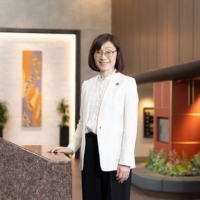The Electronic Industries Association of Japan said Friday that it will launch a five-year project in April to develop next-generation semiconductors as part of its efforts to revive the semiconductor industry.
Project Asuka, drawn up by the association's Electronic Devices Executive Committee, aims to develop technology for semiconductor designs and devise ways of making 0.1 micron to 0.07 micron system LSI (large-scale integration) circuits, which would be considered a technological breakthrough, association officials said.
The advanced technology would help electronics' companies to produce innovative electronic appliances and make small, multifunctional products that run on less electricity, they said.
The executive committee is comprised of 11 Japanese semiconductor makers -- Fujitsu Ltd., Hitachi Ltd., Matsushita Electronics Corp., Mitsubishi Electric Corp., NEC Corp., Oki Electric Industry Co., Rohm Co., Sanyo Electric Co., Sharp Corp., Sony Corp. and Toshiba Corp.
The makers will invest a total of 76 billion yen over five years on the project, which will be carried out by two research centers established by the makers -- the Semiconductor Technology Academic Research Center and Semiconductor Leading Edge Technologies Inc.
Association officials said the project will cooperate with government and academic research institutions and that other Japanese and foreign semiconductor-related companies are welcome to join.
Japan's semiconductor industry thrived in mid-1980s when it concentrated on producing dynamic random-access memories. As the market for system LSI circuits expanded with the spread of computers and other information appliances, Japan's share of the global chip market dwindled in 1990s.
"As semiconductors have become a key technology in digitally networked electronic products, we have got to revive Japan's semiconductor industry to compete with foreign rivals," said Koichi Nagasawa, chairman of the executive committee and head of Mitsubishi Electric's semiconductor division.

















With your current subscription plan you can comment on stories. However, before writing your first comment, please create a display name in the Profile section of your subscriber account page.